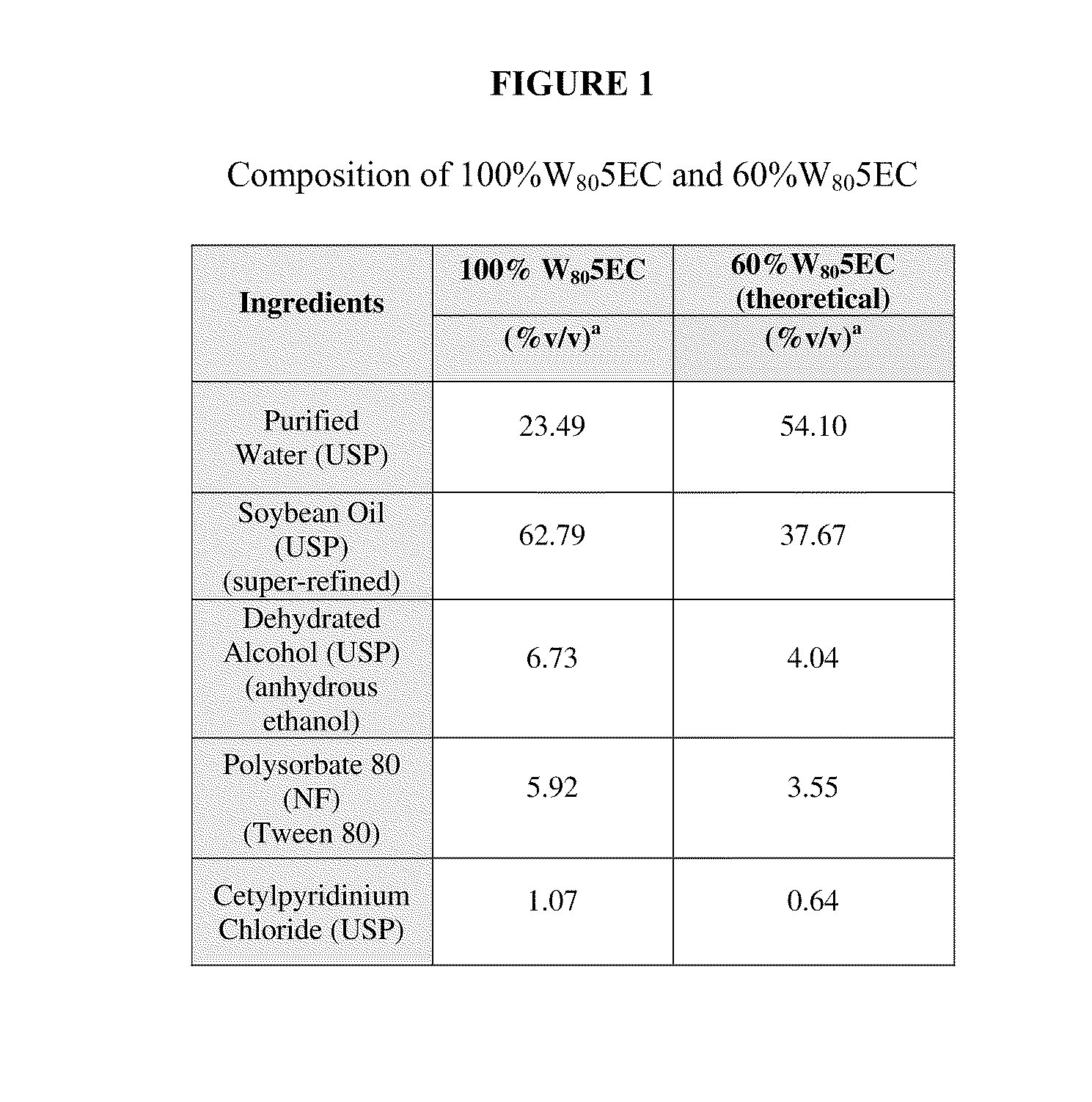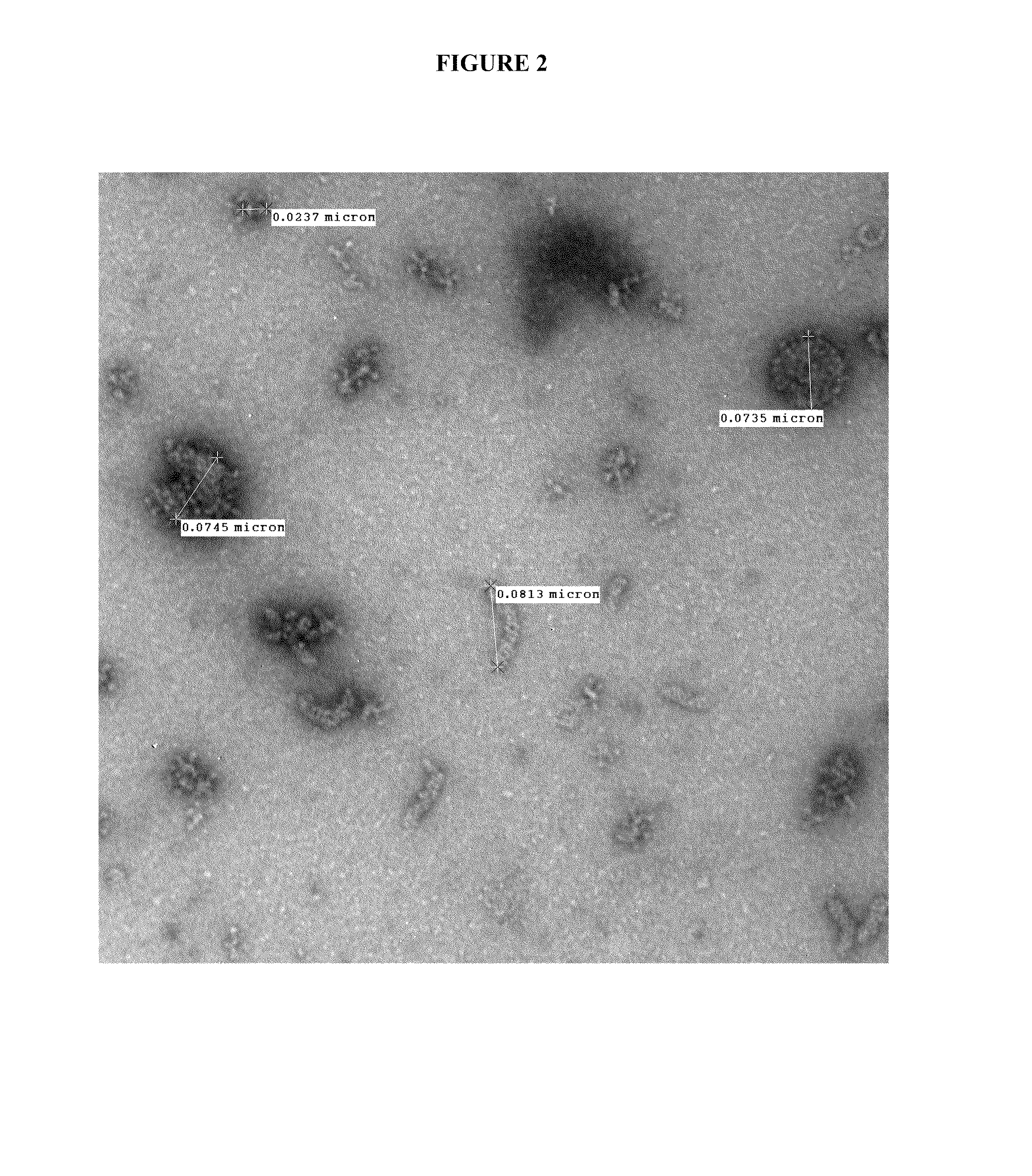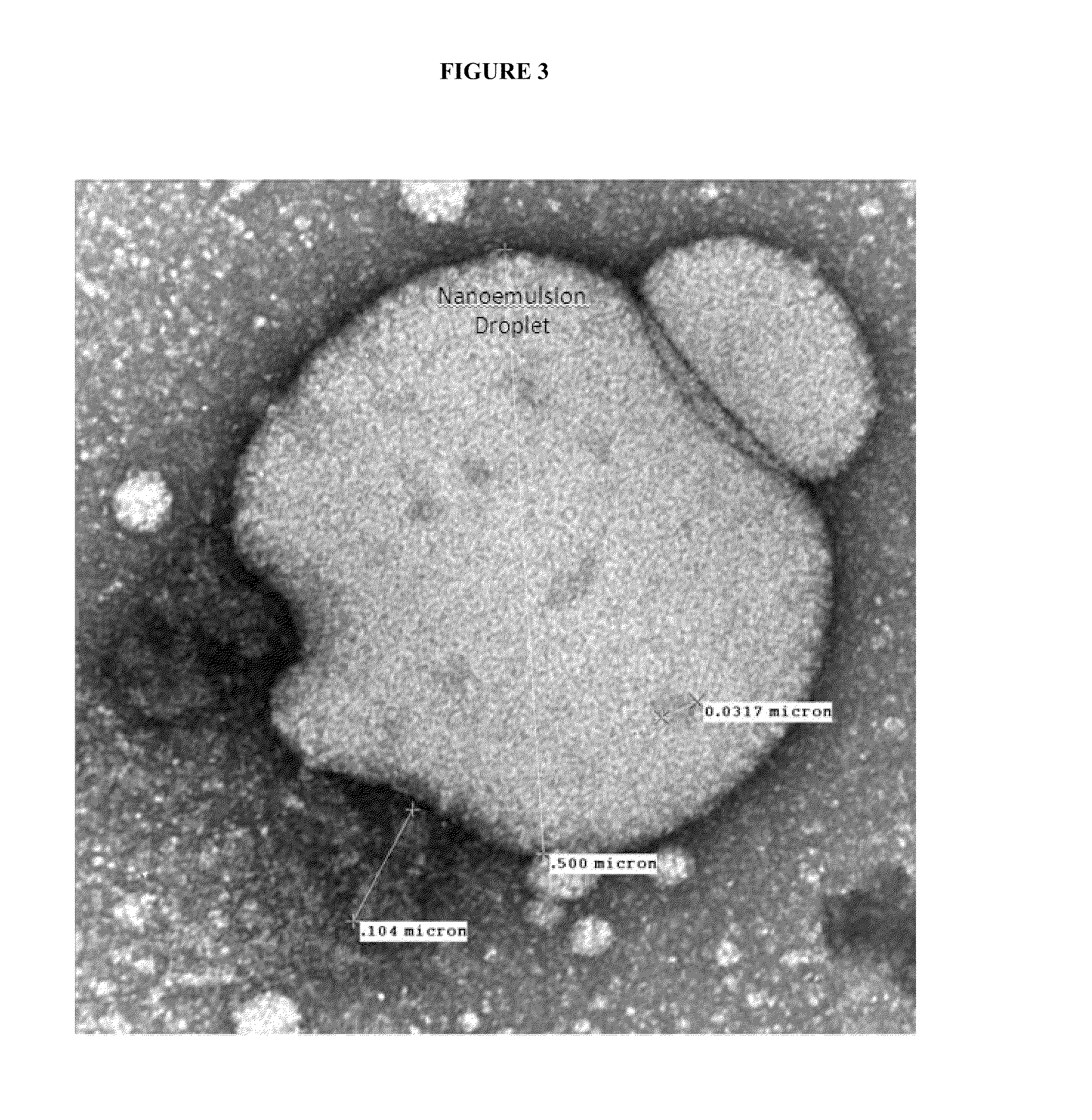Nanoemulsion vaccines
a technology of emulsion vaccine and emulsion compound, which is applied in the direction of immunological disorders, antibacterial agents, antibody medical ingredients, etc., can solve the problems of ineffective current vaccine delivery system for a broad spectrum of diseases, need for repeated immunizations, and health problems, and achieves enhanced inactivating effects.
- Summary
- Abstract
- Description
- Claims
- Application Information
AI Technical Summary
Benefits of technology
Problems solved by technology
Method used
Image
Examples
example 1
Characterization of an Immunogenic Composition Comprising Nanoemulsion and Immunogen
[0168]Experiments were conducted during development of embodiments of the invention in order to characterize an immunogenic composition of the invention. An exemplary immunogenic composition was prepared, comprising nanoemulsion adjuvant (60% W805EC) mixed with FLUZONE 2008-2009 commercial vaccine (sanofi pasteur). This formulation was designated “NB-1008 Vaccine.”
[0169]The composition of 60% W805EC is Purified Water, Soybean Oil (super-refined), Dehydrated Alcohol (anhydrous ethanol), Polysorbate (Tween) 80 and Cetylpyridinium Chloride (CPC). All emulsion components meet USP / NF Pharmacopoeia compendial requirements and are included in the CDER Inactive Ingredients for Approved Drug Products database. In addition, all emulsion ingredients, except CPC are “generally recognized as safe” (GRAS) for oral administration at the proposed concentrations.
[0170]60% W805EC was prepared by a final dilution of a ...
example 2
Adjuvant Properties of Nanoemulsion Comprising Immunogen Residing within Oil Phase
[0181]Nanoemulsion internalization into dendritic cells (DCs). DCs are specialized cells in the nasal epithelium designed to capture foreign substances and present them to the immune system in a manner that elicits specific protective immunity. Nanoemulsions increase the nasal mucosa residence time of the protein antigens residing within the oil phase of the emulsion. The size of the nanoemulsion droplets (≈400 nm) promotes uptake of the embedded antigen into DCs. Direct interactions of the nanoemulsion droplets with DCs are critical for this process to occur. Internalization of W805EC-adjuvant into dendritic cells was demonstrated using mouse JAWS II cells incubated with a range of W805EC-adjuvant concentrations. The changes in intracellular lipid content were detected by staining with the lipophilic dye, Nile Red, and analyzed using fluorescent imaging (See FIG. 8). The data demonstrated enhanced lip...
example 3
Physical Stability of Nanoemulsion Vaccine Adjuvants Containing Ethanol
[0186]The purpose of this example is to illustrate the stability of a nanoemulsion vaccine adjuvant containing ethanol at various time points. The composition of the 60% W805EC adjuvant is listed in Table 1.
[0187]Table 2 provides 3 month stability data for a nanoemulsion vaccine adjuvant according to the invention (60% W805EC nanoemulsion vaccine adjuvant).
TABLE 1Composition of 60% W805EC-Adjuvant (w / w %)Ingredients60% W805ECPurified Water, USP54.10%Soybean Oil, USP37.67%Dehydrated Alcohol, USP4.04%(anhydrous ethanol)Polysorbate 80, NF3.55%Cetylpyridinium Chloride, USP0.64%
Tables 3 and 4 below, present stability data at 12 months and at 18 months, respectively, for a nanoemulsion vaccine according to the invention (60% W805EC nanoemulsion vaccine adjuvant). In addition, Table 5 provides data regarding antimicrobial effectiveness.
[0188]The nanoemulsion vaccine adjuvant was stable at all temperatures tested over th...
PUM
| Property | Measurement | Unit |
|---|---|---|
| mean diameter | aaaaa | aaaaa |
| zeta potential | aaaaa | aaaaa |
| zeta potential | aaaaa | aaaaa |
Abstract
Description
Claims
Application Information
 Login to View More
Login to View More - R&D
- Intellectual Property
- Life Sciences
- Materials
- Tech Scout
- Unparalleled Data Quality
- Higher Quality Content
- 60% Fewer Hallucinations
Browse by: Latest US Patents, China's latest patents, Technical Efficacy Thesaurus, Application Domain, Technology Topic, Popular Technical Reports.
© 2025 PatSnap. All rights reserved.Legal|Privacy policy|Modern Slavery Act Transparency Statement|Sitemap|About US| Contact US: help@patsnap.com



